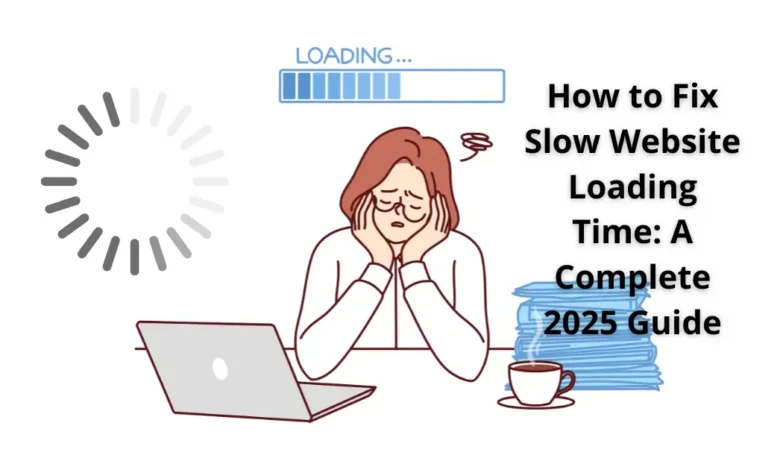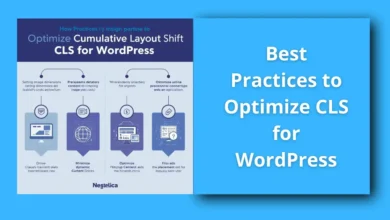How to Fix Slow Website Loading Time: A Complete 2025 Guide

Fix Slow Website Loading Time and unlock your site’s true potential in 2025. Discover the latest strategies, tools, and performance metrics that help you speed up your website, improve user experience, and boost SEO ranking.
table of contents
Why Fix Slow Website Loading Time Matters in 2025
In 2025, users expect instant access. Whether on mobile or desktop, every extra second your website takes to load could mean losing visitors, conversions, and credibility. Google’s Core Web Vitals have become even more influential in ranking decisions, rewarding sites that deliver fast, seamless experiences.
Website speed isn’t just a technical factor—it’s a business one. Studies show that a 1-second delay in loading time can lead to a 7% loss in conversions and 11% fewer page views. In the era of AI-driven analytics and short attention spans, optimizing website speed has become a survival necessity for brands, creators, and businesses alike.
Bing Indexing Issues: Why Your Website Might Not Appear After a Hosting Migration
Understanding the Key Causes of Slow Website Loading Time
To fix slow website loading time, you must first identify what’s slowing it down. Common culprits include:
- Unoptimized Images – High-resolution images can severely delay loading.
- Excessive Plugins or Scripts – Each plugin adds HTTP requests, increasing latency.
- Poor Hosting Service – Shared hosting or low-tier servers can limit bandwidth.
- Render-Blocking JavaScript and CSS – These delay the rendering of your web page.
- Uncached Content – Without caching, browsers must reload every element each visit.
- Too Many HTTP Requests – Every file (CSS, JS, image) is an additional request.
- Uncompressed Files – Large files that aren’t minified or GZIP-compressed slow down delivery.
By tackling these root causes, you can dramatically improve speed and overall site performance.
Top Strategies to Fix Slow Website Loading Time in 2025
1. Optimize Your Images and Media Files
Modern web standards encourage the use of next-gen image formats such as WebP and AVIF, which preserve quality at smaller sizes. Use tools like TinyPNG, ImageOptim, or ShortPixel to compress images before uploading.
Additionally, implement lazy loading, ensuring that images below the fold load only when the user scrolls down.
2. Use a Reliable Content Delivery Network (CDN)
A CDN distributes your website content across multiple global servers. When a user accesses your site, they receive data from the nearest node, minimizing latency.
Top CDN options in 2025 include Cloudflare, Akamai, Bunny.net, and Fastly—each offering real-time optimization and DDoS protection.
3. Enable Browser and Server Caching
Caching allows your site’s static content (like images and scripts) to be stored temporarily on users’ devices or intermediary servers.
- Browser caching ensures repeat visitors experience faster loading times.
- Server caching (via tools like Redis or Varnish) reduces database load and speeds up page delivery.
4. Minify and Combine CSS, JavaScript, and HTML
Remove unnecessary spaces, comments, and redundant code using minification tools.
- For WordPress: use Autoptimize, W3 Total Cache, or WP Rocket.
- For developers: implement UglifyJS or CSSNano within your build process.
This reduces file size and the number of requests made by the browser.
5. Upgrade to High-Performance Hosting
If your website shares resources with hundreds of others, you’ll always face delays.
In 2025, hosting providers like Kinsta, SiteGround, and Cloudways offer cloud-based hosting with scalable resources and AI-powered monitoring that detects and prevents performance drops.
6. Implement GZIP or Brotli Compression
Compressing files before sending them to the browser drastically reduces data transfer times.
Brotli compression, supported by most modern browsers, provides superior results over GZIP, shrinking file sizes by up to 25% more efficiently.
7. Prioritize Mobile Optimization
With over 70% of global web traffic now mobile, your website must perform flawlessly on smartphones.
Use AMP frameworks, responsive design, and mobile-first testing via Google Lighthouse to ensure optimal rendering.
8. Optimize Database Performance
Over time, databases accumulate redundant data and slow queries. Regularly clean up post revisions, spam comments, and transient data.
Use WP-Optimize or phpMyAdmin for maintenance and consider migrating to MariaDB or PostgreSQL for improved query performance.
9. Monitor Core Web Vitals
Google’s Core Web Vitals remain central to SEO performance in 2025.
Focus on three key metrics:
- Largest Contentful Paint (LCP) – Should load under 2.5 seconds.
- First Input Delay (FID) – Under 100 milliseconds.
- Cumulative Layout Shift (CLS) – Below 0.1 for stable visuals.
Regularly check your vitals using PageSpeed Insights, GTmetrix, or WebPageTest.
10. Limit Third-Party Scripts and Trackers
External scripts (like ad networks, analytics, and social widgets) can add significant delay.
Audit your integrations and keep only the essentials. Use Google Tag Manager to control and defer unnecessary tags.
Advanced Techniques to Fix Slow Website Loading Time
- Preload and Prefetch Key Resources – This tells browsers which resources to prioritize before they’re needed.
- Use HTTP/3 Protocol – The new standard offering faster and more secure data transfers.
- Deploy Edge Computing – Processing closer to users shortens data paths and boosts responsiveness.
- Implement AI-Powered Speed Optimization – Tools like NitroPack AI and Cloudflare Zaraz automate optimization decisions in real time.
These advanced strategies reflect how website speed optimization has evolved into an intelligent, data-driven discipline in 2025.
The SEO Impact of Slow Website Loading Time
Google directly associates user experience metrics with rankings. A slow website not only drives away visitors but also signals inefficiency to search algorithms. Faster sites achieve:
- Better crawl efficiency and indexing.
- Higher conversion rates and session durations.
- Improved mobile visibility.
Optimizing load speed is thus not just a technical upgrade—it’s an SEO investment that ensures long-term competitiveness.
Conclusion
Fixing slow website loading time in 2025 isn’t optional—it’s essential. From compressing images to deploying AI-based optimizers, every step contributes to a seamless, engaging experience for your visitors.
Remember: speed equals trust. In a digital world dominated by instant gratification, your website’s performance defines its reputation.
FAQ
1. What is the ideal website loading time in 2025?
Ideally, your site should load fully in under 2 seconds for optimal engagement and SEO performance.
2. How can I test my website’s speed?
Use tools like Google PageSpeed Insights, GTmetrix, and Lighthouse for detailed performance analysis.
3. Does website speed affect SEO ranking?
Yes, Google’s algorithm prioritizes websites with faster loading times and better Core Web Vitals scores.
4. Is using a CDN necessary for small websites?
While not mandatory, CDNs significantly improve performance for global audiences and enhance security.
5. Can plugins slow down my WordPress site?
Absolutely. Poorly coded or excessive plugins often increase server load and HTTP requests, slowing your website.
Discover more from Feenanoor
Subscribe to get the latest posts sent to your email.











